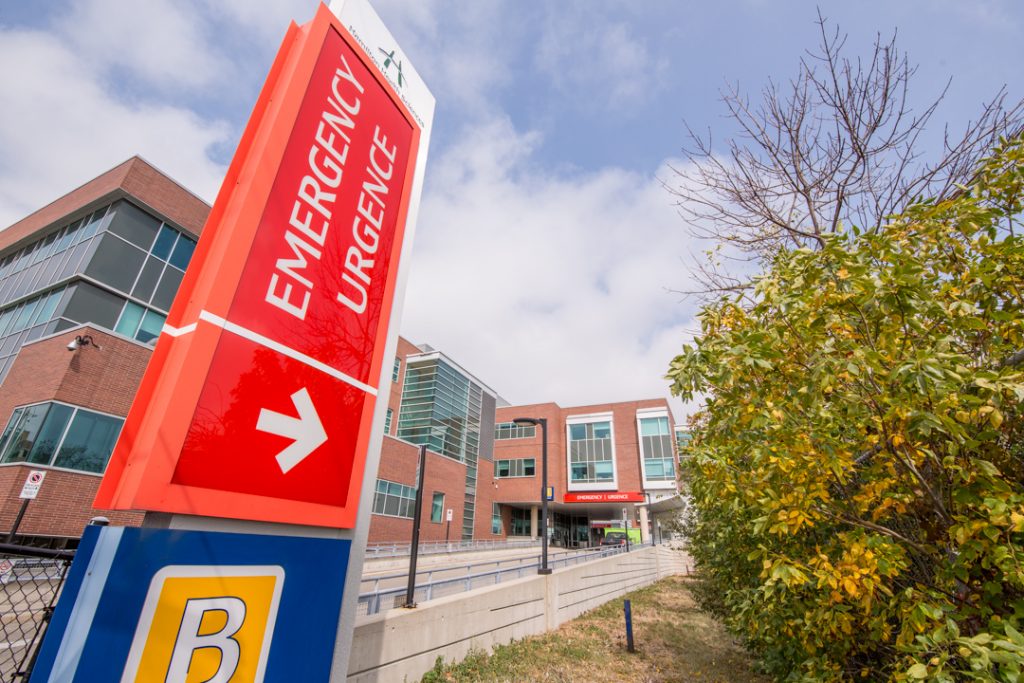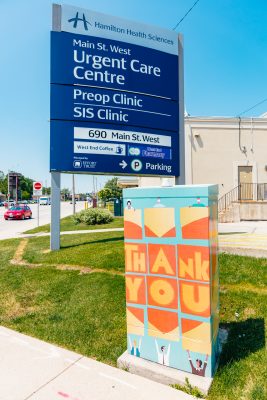
When illness or injury strike, make sure to know before you go
By Dr. Kuldeep Sidhu, Chief of Emergency Medicine, Hamilton Health Sciences

When faced with a sudden injury or a worsening illness, is your first stop the hospital emergency department (ED)?
A new public awareness campaign by Hamilton Health Sciences together with our local health care partners St. Joseph’s Healthcare Hamilton, Hamilton Public Health Services and the Hamilton Family Health Team is encouraging people to find the most appropriate care, as fast and efficiently as possible, including options other than the ED.
The campaign is timed for fall and winter — traditionally the busiest time for flu, respiratory syncytial virus (RSV) and COVID-19. These illnesses are on the upswing as our hospital sites continue to face staffing challenges, so it’s especially important to prevent overcrowded EDs by making sure to visit the most appropriate place for help.
Emergency departments: When to go

Emergency departments see the sickest and most seriously injured people first, including those arriving by air ambulance, which can mean longer waits for less urgent conditions.
Hospital EDs, open 24/7, tend to be people’s go-to when they’re sick or injured, especially after hours when family doctors or nurse practitioners aren’t available.
But keep in mind that the sickest or most seriously injured patients arriving at EDs receive care first, and hospitals are facing staffing pressures, so you may face longer wait times depending on your issue.
There are four EDs in Hamilton, with one at HHS’ McMaster Children’s Hospital for ages 17 and under. For serious concerns that aren’t potentially life-threatening or life-altering, consider an Urgent Care Centre.
Urgent Care Centres: When to go

Urgent Care Centres are good options for such things as minor fractures, sprained ankles, respiratory illnesses and cuts needing stitches. These centres are staffed by emergency-trained doctors and offer the same level of expertise as an ED. They’re excellent options for medical issues needing quick attention, or when your family doctor or nurse practitioner aren’t available, and the wait is typically shorter than at an ED.
Hamilton has two urgent care centres – one in west Hamilton and the other on the east side near Stoney Creek. Both are open seven days a week, with late afternoon/evening hours. You can also book an online urgent care appointment.
Appointment costs are covered by an Ontario health card and are available for children, adults and long-term care residents.
Check wait times, online
Hamilton ED and Urgent Care Centre wait times are updated on hamiltonemergencywaittimes.ca every 15 minutes. There’s also information on when to go to an ED or Urgent Care Centre, what to do in a mental health crisis and other health care options.
When to dial 811
By calling 811, you can connect with a registered nurse day or night for free, secure and confidential health advice. There’s also an option to connect via live chat.
Family doctors, nurse practitioners, pharmacists
Your family doctor and nurse practitioner are your first line of defence for a wide variety of issues, including minor illnesses and mental health concerns. Visit them for health concerns that can wait a day or more.
Help is also available for people looking to find a family doctor or nurse practitioner.
Ontario pharmacists can now prescribe for over a dozen common medical ailments including rashes, pink eye, and urinary tract infections.
Visit needadoc.ca to learn more about your medical care options.
